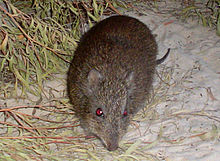Know any good Lazarus species?
https://en.wikipedia.org/wiki/Lazarus_taxon
ie. either believed extinct until rediscovered
or missing from the fossil record for say 50 million years or so.
The record for missing from the fossil record may be the monoplacophorans, a group of molluscs superficially similar to limpets. They are missing from the fossil record for 385 million years.
By way of contrast, coeloacants are only missing from the fossil record for 77 million years.
Gilbert’s potoroo (Potorous gilbertii), extremely rare Australian mammal presumed extinct from the 19th century until 1994.

Julia Creek dunnart (Sminthopsis douglasi), thought to be extinct until it was rediscovered in the 1990s.
Leadbeater’s possum (Gymnobelideus leadbeateri), thought to be extinct until 1965.
Mahogany glider (Petaurus gracilis), described in 1883 and not recorded between 1886 and 1973. An expedition by the Queensland Museum in 1989 found a living population.
New Holland mouse (Pseudomys novaehollandiae), described by George Waterhouse in 1843, it was re-discovered in Kuringgai Chase National Park, North of Sydney, in 1967.
Tammar wallaby (Macropus eugenii), the mainland Australian subspecies was presumed extinct from 1925 until genetically matched with invasive wallabies in New Zealand in 1998.
Short-nosed sea snake (Aipysurus apraefrontalis), rediscovered in 2015, after parting with their original habitat of the Ashmore and Cartier Islands for unknown reasons.
Noisy scrub-bird (Atrichornis clamosus).
